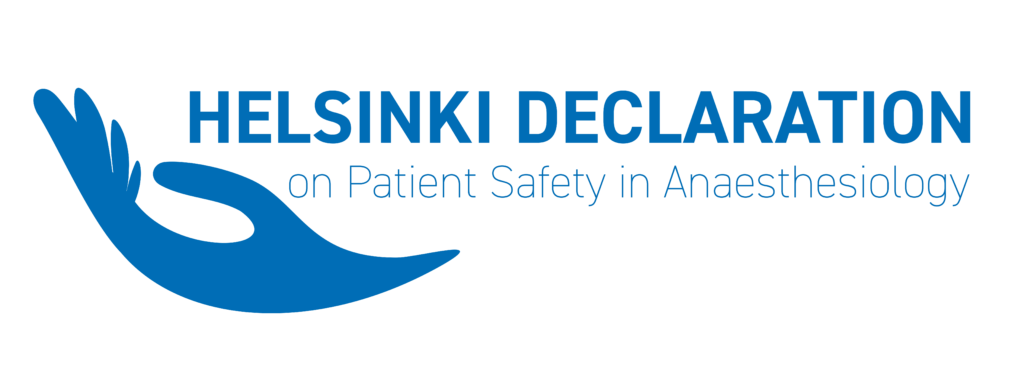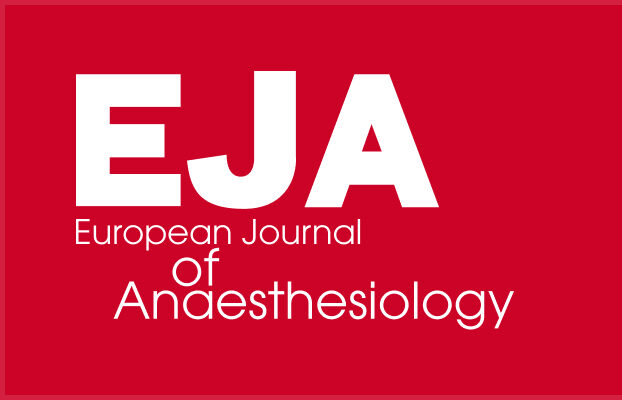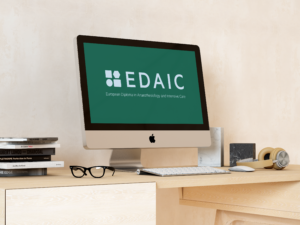Newsletter 2022
Enhancing patient safety in European anaesthesiology
The peer review in Patient Safety in Anaesthesiology and Intensive Care (PRiPSAIC) project.
Andrew Smith, Lancaster Patient Safety Research Unit, University Hospitals Morecambe Bay, UK
Andrew.Smith@mbht.nhs.uk
@ProfAndyS
As we start to emerge from the COVID-19 pandemic, we have a golden opportunity to shape our practice for the future.
This year ESAIC takes the next step with the Helsinki Declaration on Patient Safety in Anaesthesiology. PRiPSAIC – Peer Review in Patient Safety in Anaesthesiology and Intensive Care will work with industry partners, national societies of anaesthesiology, and departments of anaesthesiology and intensive care to find, and bring together, ‘change champions’ and ambassadors for patient safety in hospitals in selected European countries. We will support them to learn from each other as they map and develop their current practice and develop new ways of working for the future.
PRiPSAIC will:
- create renewed interest in patient safety, and greater visibility for those working towards it
- share and implement knowledge and good practice
- give anaesthesiologists the tools they need to learn from their own data and practice, and from each other
- promote relationships between academic, clinical and industry stakeholders in safety
Background

Preventable patient harm is an important challenge in anaesthesiology and perioperative care. As a response, the Helsinki Declaration on Patient Safety in Anaesthesiology was launched in 2010 by the ESAIC and European Board of Anaesthesiology and has been widely recognised as a practical framework for improving patient safety. It set out a vision for patient safety in anaesthesiology and laid down specific standards which European anaesthesiologists might aspire to in practice. It was signed by all European national societies of anaesthesiology and many international societies. Further, although the speciality of anaesthesiology has been at the forefront of patient safety, it is a policy priority in healthcare generally worldwide.
Our previous project (‘Evaluation of the extent of implementation of the Helsinki Declaration for Patient Safety in anaesthesiology: a mixed-methods action research project’) ran for two years between April 2018 and March 2020. It was generously supported by our ESAIC industry partners. You can find a summary here:
https://www.esaic.org/uploads/2021/01/executive-summary-final-report_evaluation.pdf
Our work showed that there was widespread appreciation of, and compliance with, the Helsinki Declaration. However, we identified other areas needing attention:
- The relationship between departments of anaesthesiology and the rest of the hospital
- The changing nature of surgical patients – many are older and sicker than 10 years ago
- Financial and production pressures in anaesthesiology
- Migration of anaesthesiology personnel across national borders
- Departments of anaesthesiology tend to work independently and there is little ‘networking’
- The need for a way of evaluating patient safety locally without relying on external ‘experts’
Since then, the COVID-19 pandemic has put great strain on those working in anaesthesiology and intensive care and has also shown the public and governments how vital our work is within the healthcare system. It has also become clear that we need to learn from each other, learn lessons from the pandemic, and collect and learn from good, meaningful data about safety. There has never been a better time to invest in safety in anaesthesiology and intensive care, and this project will make the most of this opportunity.
Aims:
This project will:
- Create a number of patient safety peer-review networks in 4 European countries.
- Train participants in evaluating patient safety using the implementation methodology and visit process used in the Helsinki Declaration evaluation project
- Allow for international exchange of knowledge and experience in patient safety in anaesthesiology
- Showcase and communicate the patient safety work within the project and any patient safety solutions it generates
- Produce a practical ‘toolkit’ for the self-assessment of patient safety by departments of anaesthesiology to support further implementation of the Helsinki Declaration.
Work to be done
We have identified five hospitals in each of four countries where anaesthesiologists are interested in committing their time to take part and will connect them together into networks. Before each network starts work, we will hold a training event so that participants are aware of what is expected and familiar with the methods and tools to be used. The networks will then arrange their patient safety visits. These will differ from, and complement, any existing inspections and accreditations in the countries concerned, as they will be led by anaesthesiologists who understand their colleagues’ context of practice, and are designed to help participating hospitals explore their own safety culture and practices from within. Not only will anaesthesiologists have the chance to see other hospitals in their own country, but we also hope to work on a ‘cascade’ principle, whereby the first country to start the work hosts one or two representatives from the network in the second country. This will continue throughout the project, allowing not only for some standardisation of the implementation process across different countries but also providing an opportunity for participants to observe patient safety practices and cultures in different nations.
The visits will consist of a review of safety documents, safety attitude questionnaires, interviews with key stakeholders and observation of practice. Particular areas of interest will be:
- How anaesthesiology and Intensive Care interact with, and influence, the rest of the hospital: problems and opportunities
- Workforce problems and solutions: number, skill mix and wellbeing
- Safety in the Intensive Care Unit
- Perioperative care: preoperative assessment and postoperative management
- Data on safety and quality– how data are used, collected analysed and acted upon, and how digitalisation helps or could help, work in the future
- Day case surgery and the potential for expanding it whilst maintaining safety and quality
- Learning from the legacy of the COVID-19 pandemic
- Learning from error
- Opportunities for networking with colleagues regionally and nationally
- Opportunities for making healthcare safer and of higher quality whilst at the same time maintaining staff satisfaction and morale
We are planning to visit countries in sequence, piloting in Scotland in March 2022, then moving on to kick things off in Lithuania, Finland, Moldova and the Czech Republic later in the year.
This project would not be possible without the support of our project partners:
Masimo, Philips
For more information, please visit: https://www.esaic.org/patient-safety/helsinki-declaration-overview/pripsaic/










